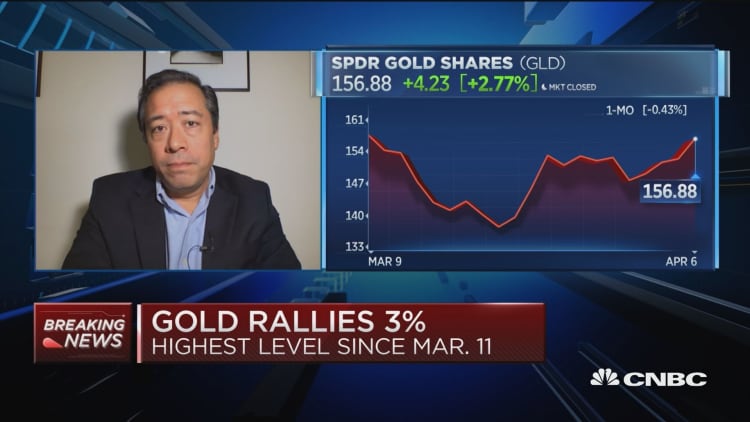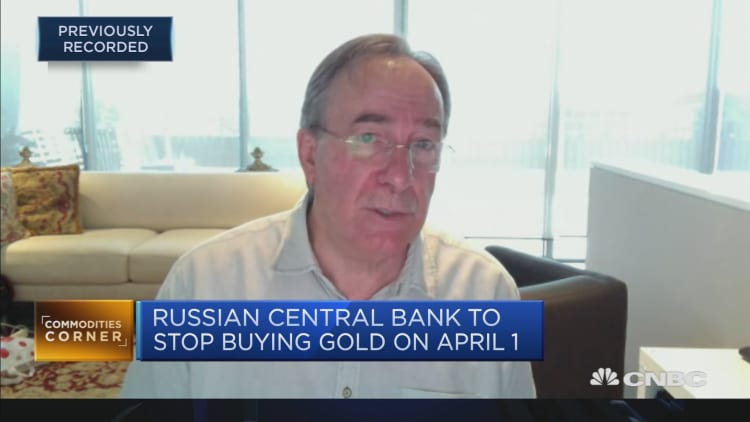Gold prices surged to seven-year highs on Tuesday as rising fears over the scale of the impending economic downturn continue to drive investors away from risk.
Spot gold climbed 1.5% to surpass $1,739 per troy ounce (/oz) during afternoon trade in Europe, its highest point since October 2012.
The precious metal has now recaptured all of the ground it lost during the initial broad market meltdown as the coronavirus pandemic spread rapidly last month. This latest resurgence, according to AJ Bell Investment Director Russ Mould, could perhaps "lay the groundwork for a return to the all-time high of $1,900 reached in autumn 2011."
Gold tends to benefit from stimulus measures by central banks, which have been abundant in recent weeks as monetary policymakers scramble to cushion the economic blow from prolonged lockdowns around the world.
"I think it's important to say now that the wind is very likely in gold's sails," Rick Rule, president and CEO of Sprott, a U.S. investment manager specializing in precious metals, said in a note to investors Thursday, suggesting that the macro factors strongly favor gold.

Across the first quarter, spot gold was up 3.95% while the S&P 500 sank by 19.6%.
Rule said that many investors had questioned why gold had not responded to the liquidity crisis which has plagued other asset classes in recent weeks.
But he said: "Gold did respond to the liquidity crisis — people who owned gold had liquidity and their liquidity was called on. They had to sell what had a bid, that included gold, to add to the liquidity."
Rule added that the policy response from governments and central banks, namely fiscal stimulus, quantitative easing (QE) and the lowering of interest rates, was also driving the gold price higher.
Dollar purchasing power
"The most important determinant in my career of the gold price — I'm not trying to say that there haven't been geopolitical events or other things moving the price of gold — but the thing that's moved the price of gold mostly in my career has been faith — or lack of faith — in the ongoing purchasing power of the U.S. dollar; most importantly the U.S. dollar expressed by the U.S. 10-year Treasury," Rule said.
The dollar has lost considerable ground from its highs in late March, when investors poured into the world's most liquid currency to insulate themselves from the havoc being wrought on risk assets. The 10-year Treasury yield, meanwhile, has been on a volatile, but generally downward trajectory during the crisis, although it has ticked up again over the first two weeks of the second quarter.

As gold is traditionally priced in dollars, when the greenback falls in value then gold prices rise.
A second factor driving prices, Rule told investors, was the increasing U.S. federal debt burden.
"What the coronavirus has spawned is $4 trillion in additional expenditure with very little probable long-term benefit. I think it is pretty clear that, first, the debasement of the currency as a consequence of quantitative easing or counterfeiting is occurring," Rule said.
The second thing occurring was that "the debit side of our balance sheet is increasing at the same time that our ability to service it is decreasing," he added, suggesting that this raises the question of who is going to buy the bonds.


